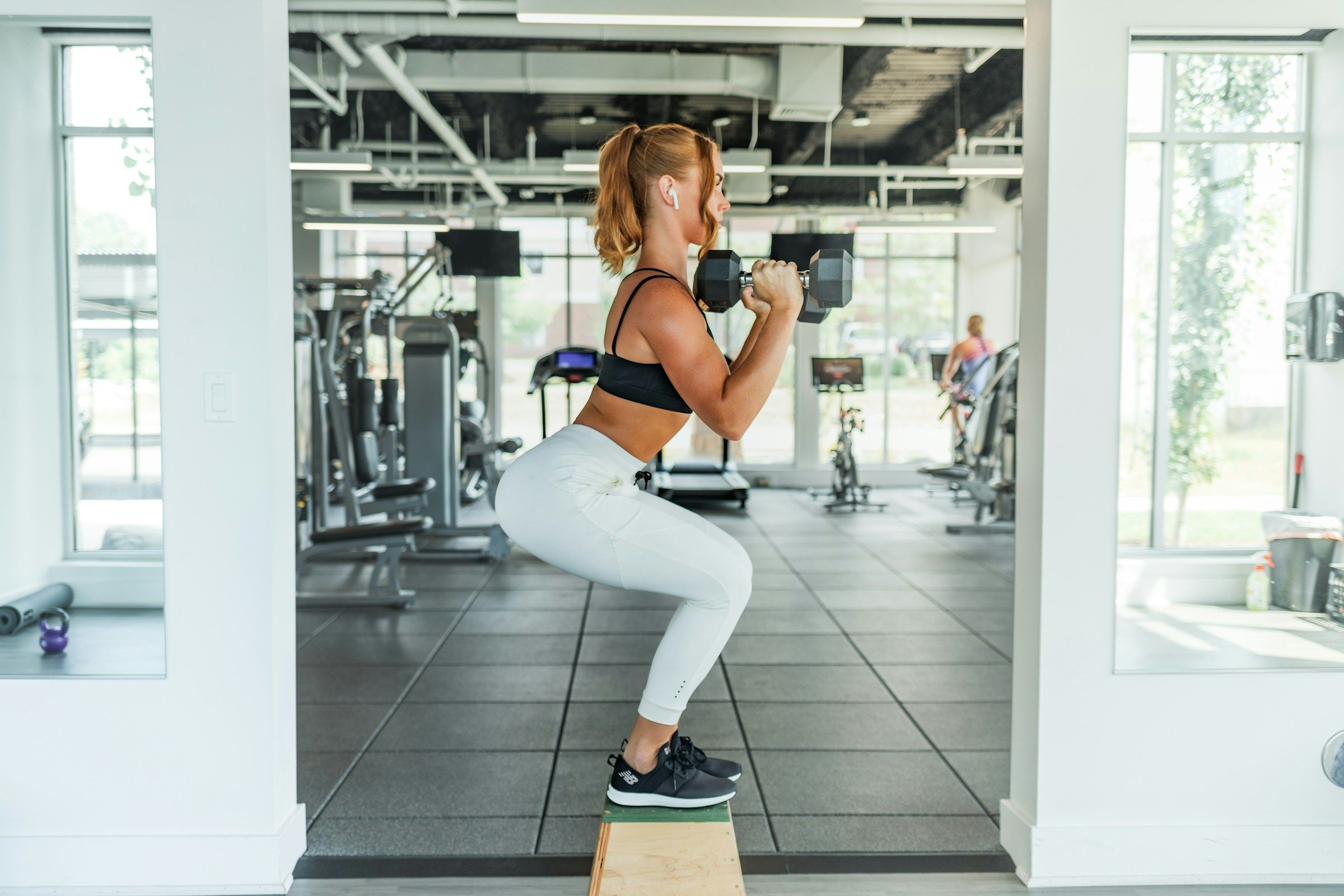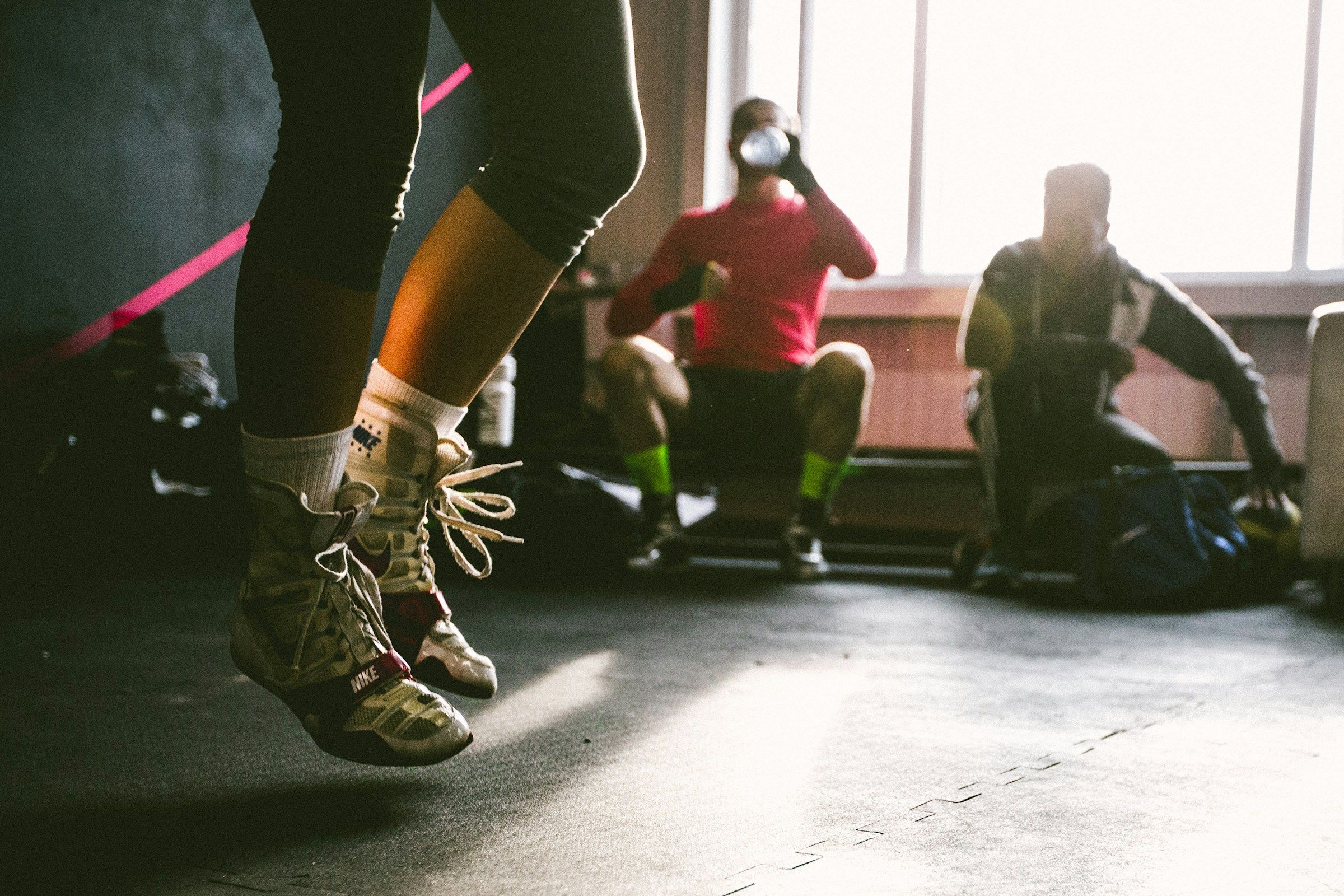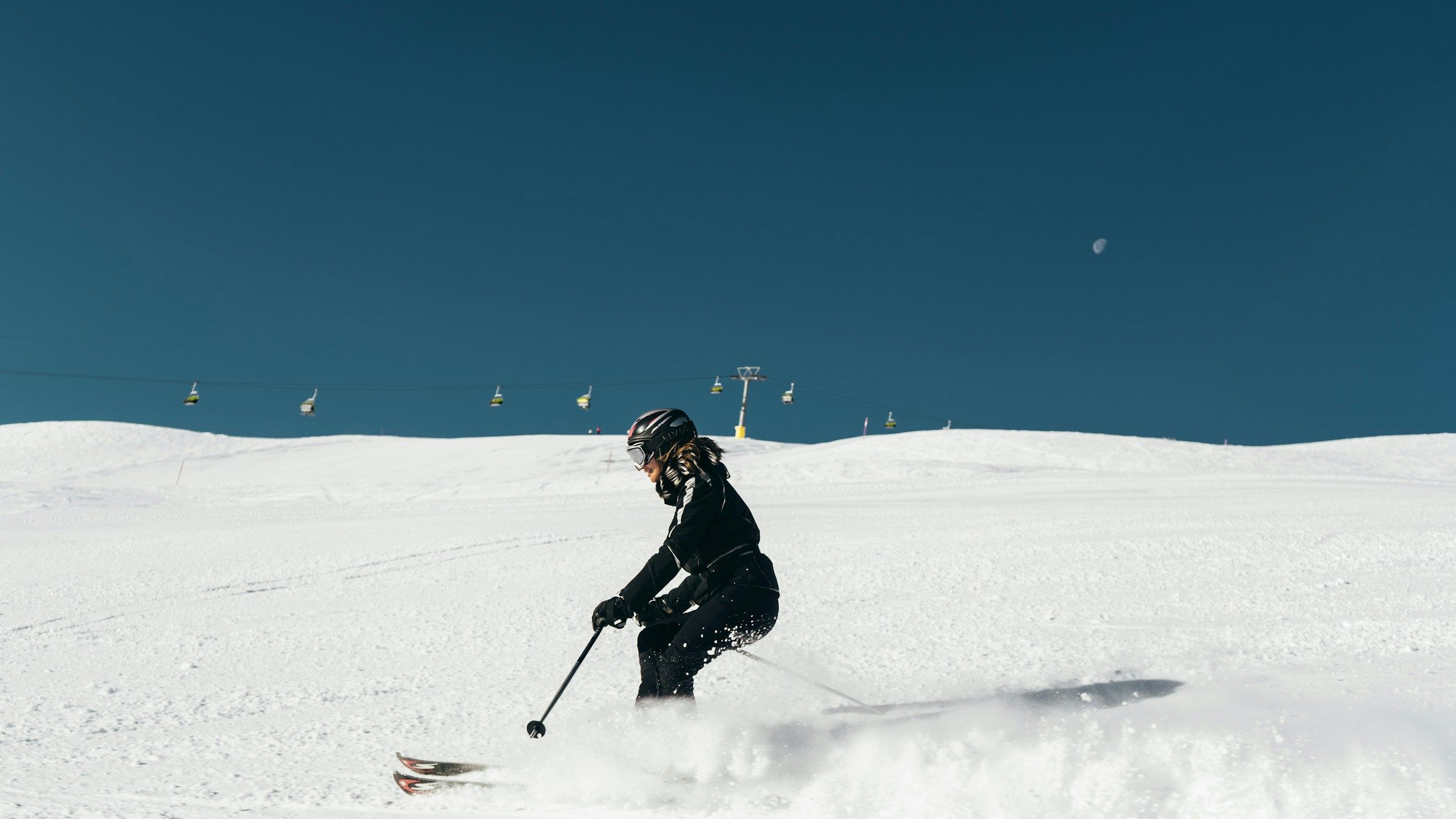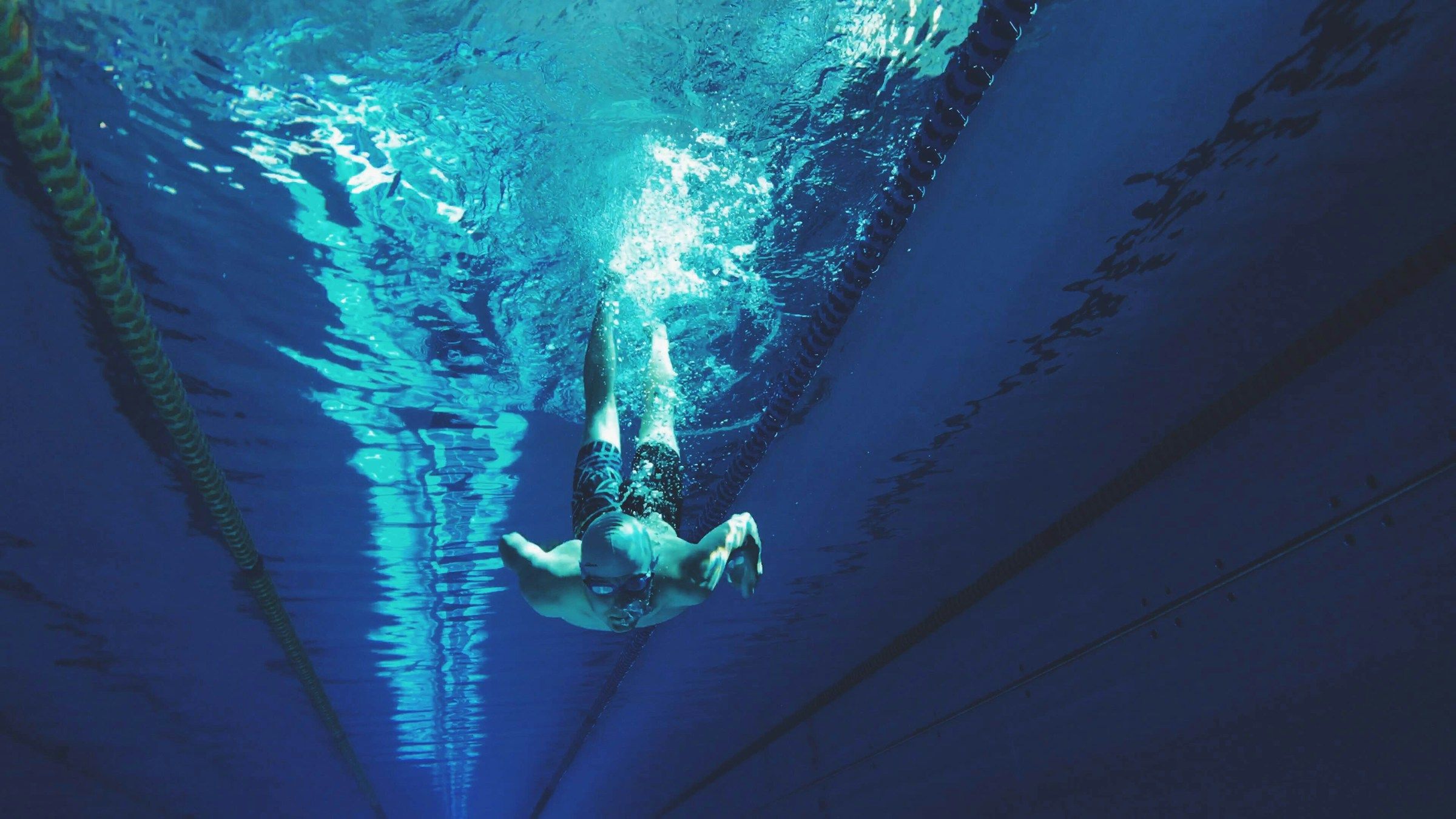Squats are a popular exercise among fitness enthusiasts, and for a good reason. These powerful and functional exercises build strength, stability, and endurance in the legs, hips, and core. They also help boost performance in many other physical activities, including sports, running, and resistance training. All of this makes squats an excellent choice for anyone looking to get fit and lose weight. If you’ve ever tried to lose weight, you may have noticed that tracking calories is a valuable strategy for reaching your goals. You may have also wondered, “How many calories do squats burn?”
This article will help you answer that question and discover effective strategies to maximize calorie burn and achieve your fitness goals more efficiently. We will also introduce the best app to track macros. A calorie tracker can make this process easier and more effective.
How Many Calories Do Squats Burn? Let’s Break It Down
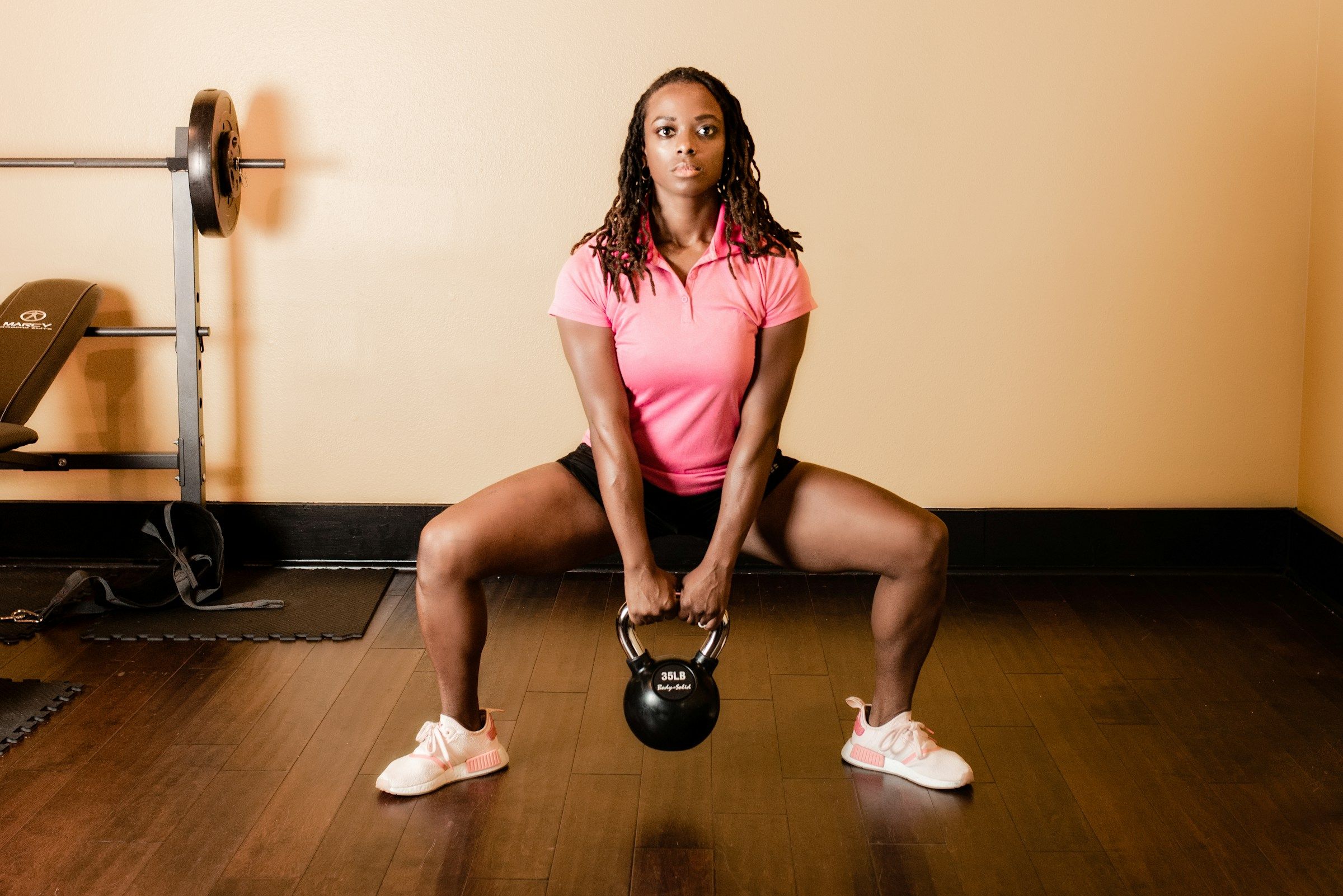
The number of calories burned during a squat depends on your weight, how long you hold your squat, and the overall intensity of your squat. Let’s drop it like it’s squat and calculate the calorie burn.
How to Calculate the Calories Your Squats are Burning
Before we calculate how many calories you could burn doing squats, an important PSA… don’t obsess over calories. Calories aren’t the be-all and end-all for monitoring health, and counting them obsessively may lead to disordered eating. You won’t enjoy eating or working out if you fixate on calories. And you should have a great time doing both.
Calories Burned Doing Squats
There are several factors to bear in mind when calculating the number of calories your squats sesh is gonna burn:
- Your body weight in kilograms (kg) (If the metric system isn’t your jam, divide your weight in pounds by 2.2 to get your shiny, metric, kg measurement.)
- Total time you spend exercising (in minutes)
- Your workout’s MET level (aka its intensity)
What’s a MET?
MET stands for metabolic equivalent (not an exclusive fashion gala, sorry). The value will help determine how many calories you’ll kick to the curb at any given intensity. For example, resting in a seated position has a MET value of 1. (This number represents how much oxygen the muscle cells in your body are using — using more oxygen means using more energy. More specifically, muscles require about five calories for every liter of oxygen they use.
A body at rest will use approximately 3.5 milliliters of oxygen per kilogram of body weight per minute. If that body is performing an activity that uses twice the oxygen it would require when at rest, then that exercise would have a metabolic equivalent of 2; if the body is using three times as much oxygen, then that activity has a metabolic equivalent of 3, and so forth.)
Understanding MET Values: Estimating Exercise Intensity and Calorie Burn During Squats
The easiest way to find your MET value is to look at a MET table. You can also estimate your MET value by evaluating how you feel while exercising:
- Can you quickly talk while squatting? Then, you’re probably using light-to-moderate effort, which would make your MET value 3.5.
- Are you huffing and puffing during your squat sets and finding it difficult to say things out loud? This likely qualifies as a more vigorous effort, which puts your MET value at 8.0.
So what about squats and the calories they burn? Resistance training, such as an explosive round of squats, has a MET of 5. For perspective, that’s the same as moderate to vigorous yard work, slightly less than moderate lap swimming (MET 5.8), and somewhat more than brisk walking (MET 4.3).
The Magic Formula
Once you have your MET value, it’s math time (yay!). Follow this simple formula to determine how many calories you’re burning each minute:
.0175 x MET x weight (in kg) = calories burned per minute
“I didn’t sign up for math,” we hear you cry on the other side of the screen. That’s fine—here’s the formula in motion to make it hella easy. Example: This demo uses a person who weighs 165 pounds. Let’s call him Jeremy.
You’ll want to convert pounds into kilograms: 165 lbs / 2.2 = 75 kg.
Next, determine the MET value. Jeremy is bringing it, getting super into a high-intensity exercise. He’s clearly at a MET of 8.0.
Then, plug these values into your formula: .0175 x 8 x 75 = 10.5
Jeremy is smashing up 10.5 calories every minute.
Calculating Calorie Burn: A Step-by-Step Guide Using MET Values and Workout Duration
To determine how many calories he’ll burn during the entire workout, multiply this by the total number of minutes you exercise.
Let’s say Jeremy plans to do squats for 5 minutes: 10.5 x 5 = 52.5
And there you have it: 165-pound Jeremy will burn 52.5 calories during 5 minutes of high-intensity squats! Go towel yourself down and have a green smoothie, jeez. You’ve earned it.
Calorie Chart
The handy chart below shows you the range of calories that a 140-pound (63.5-kilogram) person generally burns:

Calories burned per minute = .0175 x MET x weight (in kilograms)
To find the MET value, you can consult a MET table or estimate the value based on how you feel during exercise:
If you can carry on a conversation while squatting, you’re likely doing the activity with light to moderate effort. This would give you a MET value of 3.5.
If you find that you’re out of breath while doing squats, your effort is a more vigorous one. The MET value may increase to as much as 8.0. Moderate effort is light enough that you can keep talking. Vigorous or high-intensity effort makes conversation difficult, and you’ll be breathing heavily.
Breaking Down the Calorie-Burn Formula: A Practical Example for High-Intensity Workouts
Here’s an example of how to use this formula for a person weighing 165 pounds who has performed 5 minutes of high-intensity squats: To convert pounds to kilograms, divide the number of pounds by 2.2: 165 / 2.2 = 75
Plug the MET value (8 for high-intensity squats) and number of kilograms (75) into the formula: .0175 x 8 x 75 = 10.5
Now take the number of calories burned per minute (10.5) and multiply by the number of minutes exercised (5): 10.5 x 5 = 52.5
This formula shows that a person who weighs 165 pounds and performs 5 minutes of high-intensity squats has burned 52.5 calories.
How Many Squats Is It to Burn 1000 Calories?
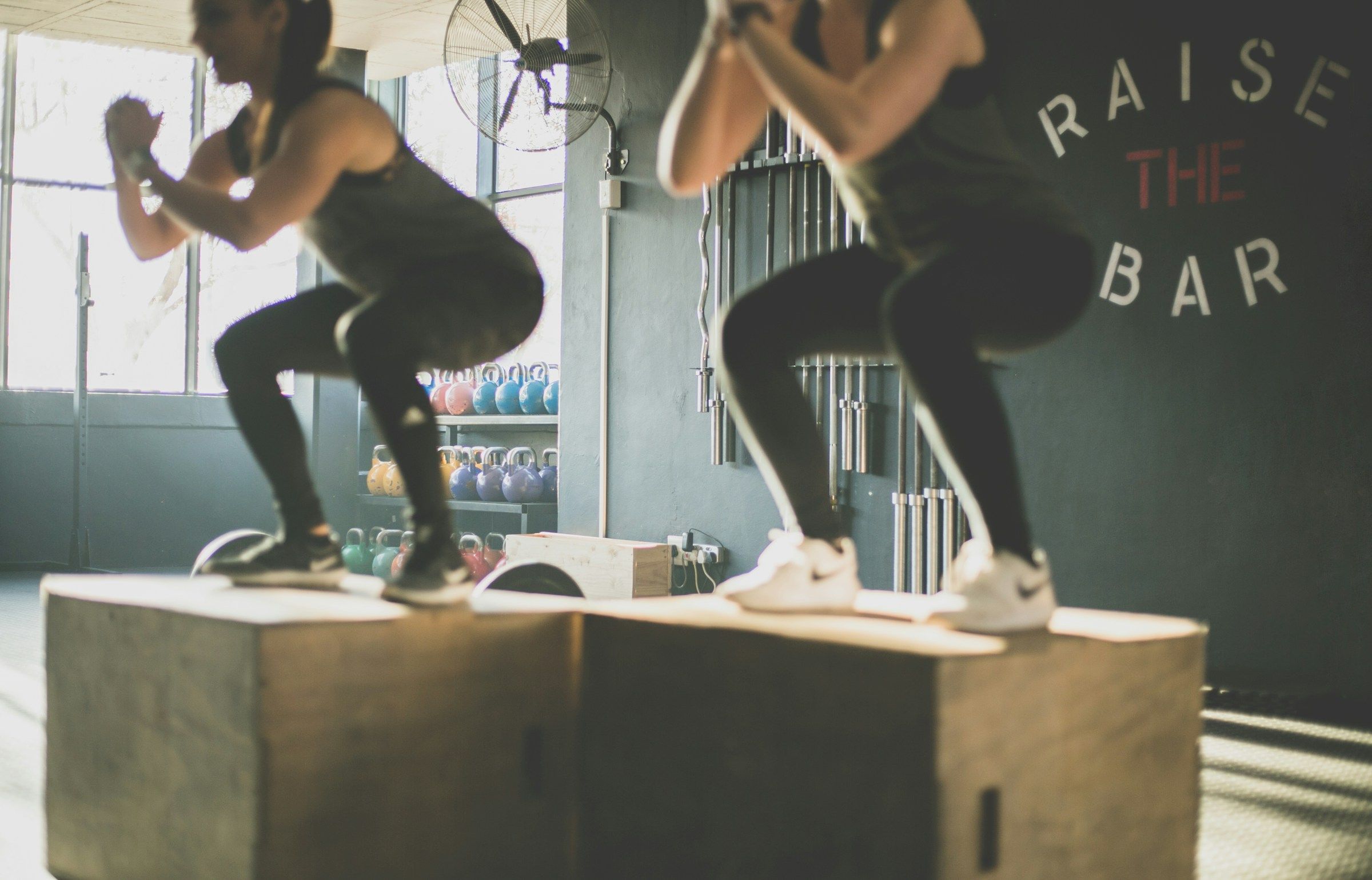
Squats can contribute to your weight loss goals, but they won’t do it alone. Combining squats with a solid nutrition plan and cardio exercises will improve your results. Squats help you lose weight by burning calories and building muscle.
The more muscle you have, the higher your resting metabolism. Your body burns calories to fuel activities. Muscle mass burns more calories at rest than fat. You’ll get a more toned appearance by reducing body fat and increasing muscle with squats.
How Many Calories Do Squats Burn?
Calorie burn isn’t a static number. The number of calories you burn doing squats will depend on a few factors: Your weight. The intensity of your squats. The duration of your squats. Generally speaking, the more you weigh, the more calories you’ll burn during exercise, including squats.
The type of squats you perform, the intensity, and how long you do them for also affect calorie burn. For instance, if you perform bodyweight squats for five minutes and then add weights for another five minutes, you would burn calories for both activities.
Maximizing Calorie Burn with Weighted and Varied Squat Exercises
The first set of squats would burn calories based on weight and exercise. Adding weights increases the intensity and helps you burn more calories. Use a calorie calculator to get an accurate estimate of how many calories you’ll burn doing squats. You can find these online. Also, look at how many calories different squat variations burn. Some may target your goals better than others.
How Many Squats to Burn 100 Calories?
If you weigh 150 lbs, you’ll burn 24 calories for every 100 squats, which is 0.24 calories per squat. To reach a particular number of calories, such as 1000 calories, you will need to perform 4167 standard-weight squats. I could feel my knees shaking just from looking at the number. Although there are many other methods to lose calories quicker, such as pushups, jumping skis, and burpees, squats are a great way to do so.
You will not get the results you desire if you do more than 500 squats a day. You can divide it into sets. This is a better way to do this. It is a good idea to start with 100 repetitions per set. If you do three daily sets, you will be well ahead of your target in two weeks. You’d burn approximately 1 pound of fat within two weeks. Just follow a strict schedule and complete three sets each day.
Squats vs. Lunges: Which Burns More Calories?
Lunges and squats are the two most common lower-body exercises. Both build muscle mass and strength as well as endurance. Both exercises work on the same muscle group (quadriceps, hamstrings, glutes, inner thighs, and calves) and similarly affect your metabolism. Your metabolism will increase, and you’ll store less fat. The more fat you store, the fewer calories you need to burn.
Squats vs. Lunges: Comparing Calorie Burn and Benefits for Lower-Body Training
The calories burned by squats or lunges are almost identical. The 150 lb weight standard was used. The squat is 0.24 calories, and the lunge is 0.25 calories. A standard lunge lasts 3 seconds; you can expect to do 20 lunges each minute. One significant difference is that squats engage both lower bodies per repetition; lunges do it individually.
While lunges can be great, athletes will notice the benefits, such as increased core activation and hip activation with lunges. If you are forced to choose, squats would be the better option regarding calorie burn. Lunges can be used to correct imbalances in lower-body strength. Each exercise is a good choice, a staple in any lower-body exercise regimen.
Squats or Lunges?
Squats and lunges are two of the most well-known lower body exercises. They both build muscle mass, strength, and endurance. Both exercises work on the same muscle groups (quadriceps, hamstrings, glutes, inner thighs, and calves) and similarly affect your metabolism. Your metabolism increases, and you store less fat. Less fat stored, fewer calories you need to burn.
Squats vs. Lunges: Choosing the Right Exercise for Calorie Burn and Lower-Body Strength
Squats and lunges burn virtually the same calories. Using the same weight standard as earlier (150 lbs.), you burn 0.24 calories per squat and 0.25 calories per lunge. A standard lunge is 3 seconds long, averaging 20 lunges per minute. The main difference between the two is squats engage both sides of the lower body per repetition, while lunges do it one at a time.
Lunges are great, but their added benefits, like core and hip activation, are more noticeable for athletes. If you have to choose, squats are a better choice regarding calorie burn, but if you need to address some imbalances in lower body strength, lunges will be more suitable. Each exercise has its merit, so they are staples of any lower-body exercise routine.
Additional Caloric Burn
A 2020 study on 15 young men aged 21-29 (1) revealed that squats burn significantly fewer calories than push-ups.
- Calories burned per squat: 0.36-0.64 kcal(95% confidence interval, 0.42 kcal-0.58 kcal);
- Calories burned per push-up: 0.57-0.97 kcal (95% confidence interval, 0.66 kcal-0.88 kcal);
- The heel raise will burn the lowest calories in a minute(2.7±0.5 kcal, around 2.3 METs).
The estimated energy expenditure from squats at a frequency of 10 repetitions per minute was 6.3±1.4 kcal (around 5.4 METs). Doing push-ups at ten reps per minute will burn 9.2±2.1 kcal in one minute(around 7.8 METs).
Know Your Goal
When it comes to working out, more often than not, it’s a choice between two options. You’re either slimming down and wanting to burn as many calories as possible or working out to build muscle and strength. This is not to say that choosing one will turn your back on another; it’s just that one approach will focus more on either slimming or building. Knowing your aim is the best way to start your program; at this point, you need as much information as possible.
Doing squats to lose weight depends on what kind of squats you do. If you aim to lose weight and have a more toned midsection and lower body, bodyweight squats are your best friend. No exercise engages as many lower body muscle groups as squats.
The Hidden Calorie-Burning Benefits of Squats: EPOC, Muscle Growth, and Body Recomposition
Your body burns more calories after your sets because it’s trying to recover from what it just went through. This is known as excess post-exercise oxygen consumption. Increasing your squats’ intensity can bump your calorie burn to 15 percent. Judging by the above information, squats seem to be a poor choice for burning calories.
Squats have many benefits, such as directly affecting calorie-burning targets and weight loss.
- Adding weight to your squats builds muscle, which burns more calories while resting. A 10-lb muscle mass burns 30 calories more than fat mass at rest in a day.
- The added weight increases the intensity, drastically increasing your metabolism because you burn more calories as your body tries to recover.
As we discussed earlier, squatting can trigger a positive body recomposition, where you burn through a lot of fat and build muscle at the same time. This means that you may weigh about the same, but you will look slimmer and feel more substantial than you did before. This is because of the increase in muscle mass, which is denser than fat.
Mix Up Your Exercise
Squats are a staple of any workout routine but are geared more toward building strength than burning calories. It could be the best way to burn calories compared to most exercises in the gym, but it still burns less than traditional aerobic exercises. Squats are compound exercises that engage most lower body muscle groups, giving you a more substantial base to do other exercises. Still, unlike running, biking, or jumping rope, its calorie-burning effects are more significant because it builds muscle mass than sheer fat burnin.
You may also need to know about the Ruffier Squat test. Squats can have other variations, suchs as:
- Resting Squat
- Jump Squat
- Single Leg Squat
- Wall Squat
Track Your Calories within Less Than 15 Seconds with Our Calorie Tracker App
Goldi AI transforms calorie tracking with our cutting-edge AI technology. Just snap a photo of your meal, and we’ll do the rest. Our app combines your phone’s depth sensor with advanced AI models to:
- Analyze food volume
- Identify ingredients
- Instantly calculate calories, protein, carbs, and fat content
With 90% accuracy on visible foods and multiple tracking options, we’ve made nutrition tracking effortless. Options include:
- Barcode scanning
- Food label recognition
- Manual description for complex items like smoothies
Gone are the days of tedious manual logging calorie-tracking apps. Whether scanning a full meal or a quick snack, Goldi AI gives you accurate nutritional information in under 15 seconds. Plus, our AI learns from your feedback, continuously improving its accuracy.
Stay on track with personalized insights and brilliant reminders. Goldi AI makes achieving your fitness goals simpler than ever. Track your calories with your camera using Goldi AI’s calorie tracker today.
Goldi AI’s AI Technology Learns As You Use It
Goldi AI uses advanced artificial intelligence to help you track nutrition with your camera. Our technology analyzes your meals and improves over time. The more you use Goldi AI, the better it gets at accurately tracking your food. This means you can enjoy personalized nutrition tracking that gets smarter with your feedback.
